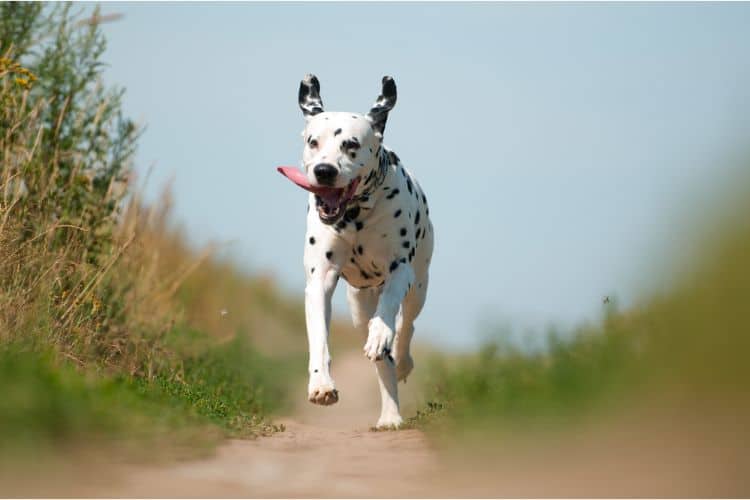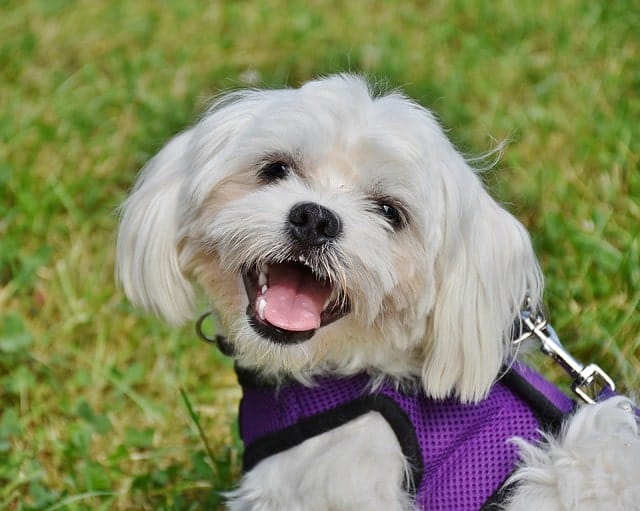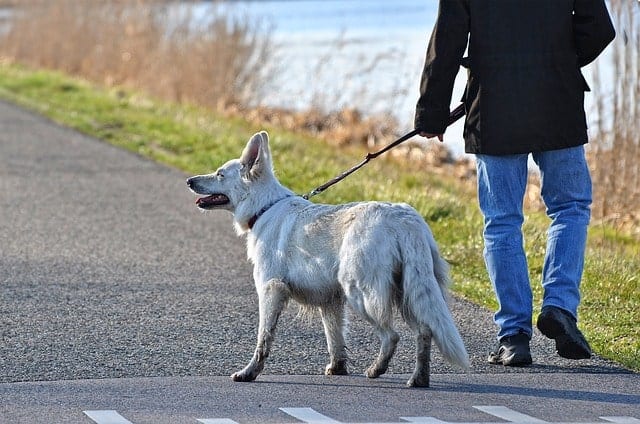
Providing appropriate exercise for your dog is a crucial component of being a responsible pet owner. However, it can be confusing to know if your dog is getting enough exercise, and what exactly constitutes a healthy amount of exercise for dogs.
Many dog owners assume that a short daily walk is adequate to keep their dogs healthy. In actual fact, the amount is dependent on a range of factors.
The following article will give you a better understanding of how much exercise dogs need in general, as well as the main factors that impact each individual dog’s exercise needs. You’ll also find a few handy tips for keeping your dog fit and healthy.
How Much Exercise is Ideal for Dogs?
Generally speaking, most companion dogs need between 30 minutes and 60 minutes of exercise every day. However, the amount of exercise each dog needs is shaped by a number of factors. That is why it’s important to ensure your dog is getting the right amount of exercise based on their specific needs.
So what factors are involved when it comes to the ideal amount of exercise for your dog? The ASPCA states that individual exercise needs will vary based on factors such as health, breed (or breed mix), and age.
Health

Photo courtesy: Pixabay Public Domain
One of the biggest factors that impacts how much exercise a dog needs is their health. Healthy dogs can generally handle the most exercise, all other things being equal, but specific health conditions affect exercise needs in different ways.
For example, dogs with arthritis still need to exercise, but the type of exercise they get should often be modified to keep them comfortable. Dogs who are recovering from an illness or injury usually need to take it easy but not be completely sedentary. On the other hand, overweight and obese dogs will likely benefit from greater levels of exercise, considering it can be a key part of healthy weight loss. Talk to your veterinarian before starting an exercise plan if you have any questions about your dog’s health.
Age

Photo courtesy: Pixabay Public Domain
A dog’s age will also affect the amount of exercise they require. Let’s start off with puppies. While puppies are bundles of energy, they generally need less formal exercise than adult dogs. All their play and exploration will usually do the trick. In fact, too much forced exercise may even damage their developing joints. A good rule of thumb is to start off with short, leisurely leash walks when they are 8 weeks old or so and gradually build up your length and speed as they mature. Wait to jog or go on long, rigorous hikes until their musculoskeletal systems are mature. This usually occurs around 8 to 12 months of age for small to medium-sized dogs but can be as late as 24 months of age for very large dogs.
Senior dogs also don’t require as much exercise as do adult dogs who are in the prime of their lives. Around 30 minutes of exercise is usually sufficient for most older dogs, although this may not be true for a very fit and healthy canine senior citizen. If you’re concerned about exercising your senior dog for too long, consider breaking up sessions into smaller chunks. For example, instead of one long walk per day, try two shorter walks.
Breed

Photo courtesy: Pixabay Public Domain
A dog’s breed will also contribute to how much exercise they need. More active dog breeds, like those traditionally used for hunting or herding, will need higher levels of physical activity to maintain their physical and mental health. Examples of active dog breeds include:
- Poodles
- Beagles
- Golden Retrievers
- Labrador Retrievers
- Border Collies
- Miniature Pinschers
- Dalmatians
- Jack Russell Terriers
- Siberian Huskies
Conversely, less active dog breeds do not require as much exercise. For example:
- Yorkies
- Chihuahuas
- Great Danes
- Newfoundlands
- French Bulldogs
- Maltese
- Mastiffs
- Cavalier King Charles Spaniels
- Pekingese
It’s important to remember that while these three factors will help provide an idea of your dog’s exercise needs, every dog is different, so the appropriate amount of exercise will vary from dog to dog.
How Do You Work Out How Much Exercise Your Dog Needs?

Photo courtesy: Pixabay Public Domain
Now that you know which general factors impact how much exercise dogs need, you are probably wondering how to determine how much exercise your dog should get.
Before you start crunching numbers, I strongly advise asking your veterinarian. They will be able to provide an expert recommendation based on your dog’s particular needs. You’ll also be able to ask them any questions you have about exercising your dog, so it’s well worth scheduling a visit.
Exercise Tips for Keeping Your Dog Fit and Healthy
1. Schedule Exercise Time
Even the best of us can occasionally forget to take our dogs out for exercise. To minimize the chances of accidentally missing a session, schedule exercise time on your calendar and set a reminder on your phone or smartwatch.
2. Make Playtime Fun Using a Ball Launcher and Other Toys
Walks are a fantastic way to keep most dogs in shape, but make sure to supplement them with ample playtime. Not only will this make it easier to ensure your dog is getting enough exercise, but it will also make exercising more enjoyable for both of you. If you’re looking for a fun activity, why not play some games using a ball launcher? Other good ways to get your dog up and about include tossing squeaky toys, using flirt poles, and playing tug with rope toys.
3. Don’t Forget About Indoor Exercise
It’s all too easy to skip an exercise session because it’s raining or you don’t have enough time to head outdoors. There are plenty of indoor activities to exercise your dog that you can try out like dancing, an indoor agility course, or running up and down stairs. Fortunately, you don’t need to let being stuck indoors get in the way of exercising your dog.
4. Know When to Feed Your Dog
Feeding your dog pre-exercise can lead to discomfort and possibly a life-threatening condition called gastric dilatation-volvulus (GDV). If you must feed them prior to exercise, aim to do so at least 30 minutes beforehand. Problems can also occur if you feed your dog immediately after exercise, so again, aim to wait at least 30 minutes before a post-exercise feed.
5. Recognize When Your Dog Has Had Enough Exercise
You don’t want to overexert your dog or for them to suffer an injury because you’ve gone too hard or long in an exercise session—especially if they’re suffering from a health problem, injury, or are an older dog. That’s why it’s important to be mindful and look for signs that your dog has had enough and take a well-deserved rest. If your dog is panting excessively, starting to limp, or is slowing down, it’s time to stop.






